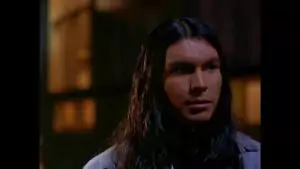By Timandra Harkness

✅ AI Essay Writer ✅ AI Detector ✅ Plagchecker ✅ Paraphraser
✅ Summarizer ✅ Citation Generator
It is a glorious film, but you could not make it now. And that is not just my opinion. My preview screening companion and fellow lover of weepy old black and white films agreed that not even the director Max Ophüls could get away with this 1948 classic if he tried to make it in 2009.
But why not? Well, for a start, it is visually sumptuous, but in black and white. If you remade it in colour, you could never match the starkly beautiful composition of the shots, shy Lisa (Joan Fontaine) constantly framed in windows or peeping round doors, the dense black of monochrome night. The colour, the light, the texture of real life, would clutter up your eye and distract you from the lovely artifice.
That is the second thing. It was usual for films of that era to be made entirely in the studio, but if you took that away and shot a remake in a real place, Vienna or somewhere in Eastern Europe that looks like period Vienna, you would lose the sense of fantasy that drenches the film. It is no accident that the most intense and real emotional scenes happen in the most artificial locations—a dance hall where the band in military uniforms are actually women; a train where the landscape rolling past the window is blatantly false, because it is a fairground ride that goes nowhere. It is a fantasy journey, like the fantasy journeys of Lisa’s childhood.
Because the painted scenes of Venice and Switzerland sliding by are not, after all, so far from the film-studio Vienna of the rest of the film, we can share the interlude of real intimacy, though we know it is just a fantasy. In 3D, with CGI, we would forget that this love affair is not real, and feel bewildered and cheated when real life returns.
Then there is the pace, and the almost complete lack of plot. The only contemporary film that devotes this much time to lingering close ups of the lead character’s face is Twilight, the teen vampire romance. In that, as in this, the wallowing in unconsummated desire is a thrill in itself, a film doodling ‘Mrs. Stefan Brand’ (or ‘Mrs. Robert Pattinson’) for hours on end. Letter from an Unknown Woman consists almost entirely of a woman failing to act on a teenage crush. It is like Hamlet rewritten for Mills and Boon.
There are dramatic scenes, but only the barest shadow of the structured storyline now considered essential in a Hollywood film. And between the emotional climaxes, endless minutes of our heroine gazing hopelessly at Stefan, the object of her passion. Often from outside his window, or across the road in the snow.
Which is the last reason I think you could never make this film today. Lisa is so wilfully passive, and so self-destructively obsessed with a man who barely registers her existence. Theses have been written about how subversive she is as a character, how her refusal to adopt a conventional role as either seductress or respectable wife is a kind of revolt against social expectations. But if you had a friend who behaved as Lisa does, you would start with a serious talking-to and work your way towards having her sectioned.
She begins by mooning around after a man she has not even met, but has overheard playing the piano. After failing to declare undying love to him (because he has just brought yet another woman back to his apartment) she leaves him alone for a while, but soon she is turned down a proposal of marriage and taken a menial job so she can stand outside his window at night. After an affair so brief he forgets her name, she has his baby without ever trying to contact him again, until a chance meeting makes her wreck her new marriage, which leads to her unlucky death.
Romantic? Yes, in a bizarrely masochistic way. And you can still find such self-immolating heroines in both Mills and Boon and vampire scenarios (though I believe Mills and Boon is letting some self-respect creep in these days). But not the kind of heroine we look for in the 21st Century. And yet you really should see this wonderful film. Which raises the question: what is the value of a work that is so wildly not of our own time? Yes, you could think of it as educational, a slice of cinema history, classic 1940s visual style and masterful cinematography. Or you could regard it as a work of sociology, expressing the repressed sexual politics of an era that was trying to send women back into the kitchen. And when we watch something from another era that breaks all the rules of our own, it does make us more aware of what we expect from a film today.
But that is not the point. Letter from an Unknown Woman was not a typical film of its time either. It was a critical and box-office flop, and only later became recognised as one of Ophüls’ greatest works. But by speaking to us in the language of 60 years ago, it invites us to take a fresh look at film.
If this was a new release from Hollywood, people would fall asleep, or walk out and then write to complain about the doormat heroine. Because it was made in 1948, you can see it on its own terms. Enjoy the visuals, the slow hypnotic pace, the ludicrous romantic story that meanders to a tragic end. You could not make it today, because it found its moment 62 years ago. And it is a glorious film.
———
Written under a Creative Commons License, with edits: https://creativecommons.org/licenses/by/1.0/
Follow us on Reddit for more insights and updates.




Comments (0)
Welcome to A*Help comments!
We’re all about debate and discussion at A*Help.
We value the diverse opinions of users, so you may find points of view that you don’t agree with. And that’s cool. However, there are certain things we’re not OK with: attempts to manipulate our data in any way, for example, or the posting of discriminative, offensive, hateful, or disparaging material.